VIA's Dual Core Nano & VN1000 Chipset Previewed
by Anand Lal Shimpi on November 15, 2010 12:26 PM ESTI haven’t had an official product briefing with VIA in years. The last time I met with a representative from the company was two years ago outside of IDF in San Francisco. Before then, it was probably around 4 years.
VIA was the first casualty of integration in the PC space. Today we’re all talking about moving graphics onto the processor die, but a few years ago we were having similar discussions about moving the memory controller and north bridge on die. As a manufacturer of chipsets (north and south bridges) for CPUs, VIA lost relevance in the x86 CPU market as the need for a third party chipset maker faded.
VIA’s recent visit to me in Raleigh, NC had two purposes according to the company. One, to remind me that VIA was still around and to give me some face to face time with a VIA representative (appreciated). And two, to showcase VIA’s dual-core Nano platform and brand new integrated graphics chipset (intriguing).
For those of you who don’t know, Nano is VIA’s answer to Atom, except it came along long before Atom did. Just like Atom, Nano was designed in Texas but by VIA’s Centaur team - a microprocessor company it acquired several years back. Centaur’s speciality was low power microarchitectures, and Nano is exactly that.
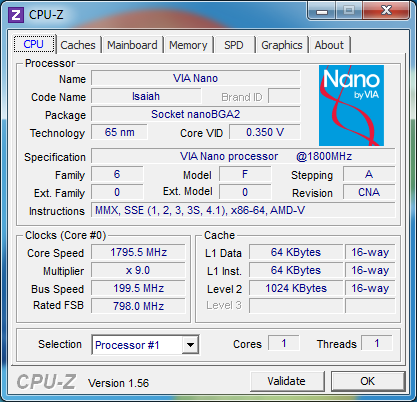
Compared to Atom, Nano is a bit of a beast. Both Atom and AMD’s Bobat core can fetch and issue up to two instructions. Nano can do three. Like AMD’s Bobcat, Nano has a full out of order execution engine. Atom, for the time being, is in-order.
The execution engine is well matched to the front end. Nano features seven dispatch ports and can retire up to three instructions per clock. In this sense, Nano is more like AMD’s Bobcat than Intel’s Atom. In fact, those two should be better matched than Atom vs. Nano.
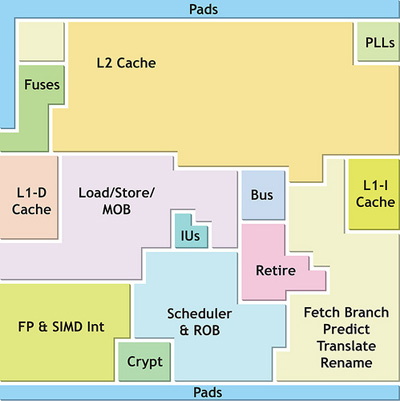
VIA's Nano
Nano has other advantages over Atom. It features a hardware encryption engine. Something VIA introduced long before Intel’s AES-NI in Westmere. All of these features come at the expense of power consumption. Nano should be faster, but it draws more power than Atom.
VIA is a fabless semiconductor manufacturer, its Nano processor and associated chipset are both fabbed at TSMC in Taiwan. Nano is currently a 65nm design although VIA plans to take it to 40nm in 2011.
The dual-core Nano that VIA dropped off is architecturally identical to the existing Nano. Similar to the dual-core CPUs, DC Nano is literally two Nano die placed alongside one another. The L2 caches are private and all core-to-core communication happens externally via the Nano’s latest chipset: VIA’s VN1000. The dual-core die measures 8.5 mm x 16 mm (136mm^2 total area) on a 21 mm x 21 mm BGA package.
Ironically enough, VIA hasn’t integrated a memory controller into its own CPU design. Although to VIA’s credit, the CPU’s performance is competitive without it. I suspect VIA will deliver a more integrated version of Nano within the next 12 - 18 months.
While the dual core Nano improves competitiveness with Intel’s Atom, it’s the VN1000 that’s a huge step forward. These days everyone is talking about graphics and VIA is no exception. The VN1000 integrates S3’s Chrome 520, a brand new DirectX 10 GPU. VIA was light on architectural details other than to state that it has 32 stream processors and 4 texture sampling units. The VN1000 die is nearly as big as the CPU at 100mm^2 on a 65nm process. VIA claims that the 520’s performance is easily good enough for mainstream graphics.
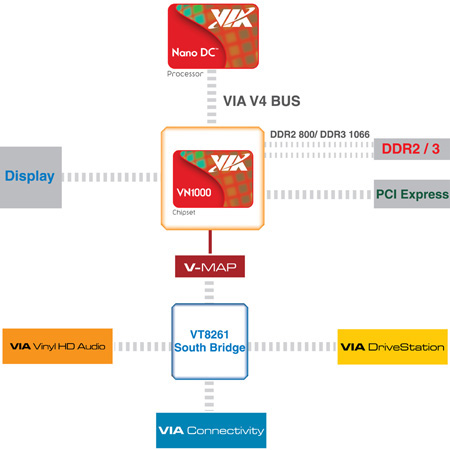
Armed with a reference ATX motherboard, I was eager to verify those claims. Note that this review appears a lot later than expected as our original DC Nano reference board was damaged in transport. It wouldn't do anything beyond POST so what you're looking at is our second sample.


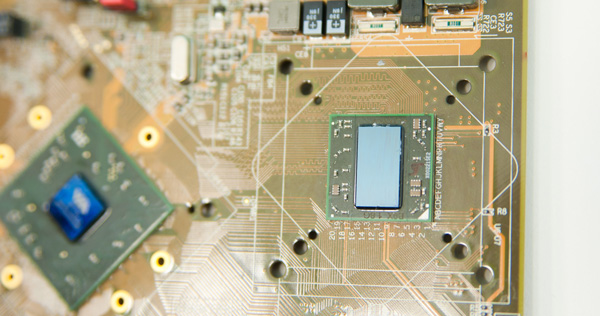
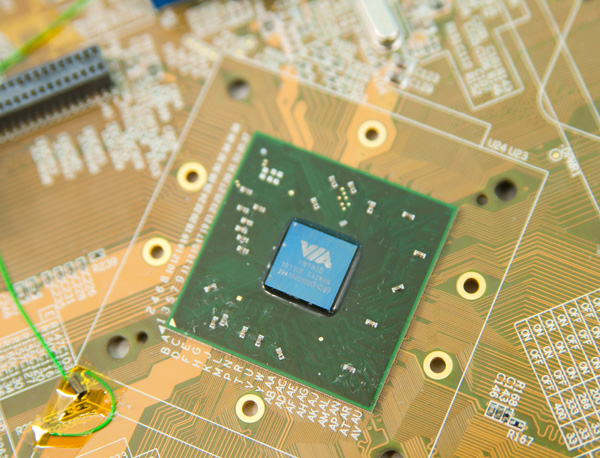
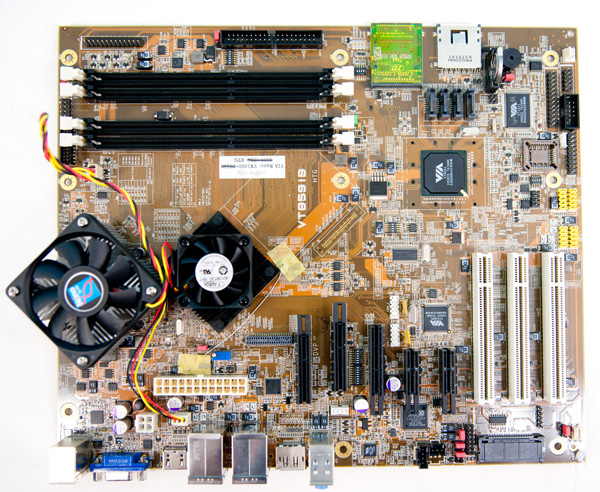








54 Comments
View All Comments
Marlin1975 - Monday, November 15, 2010 - link
Why 65nm? Does TSMC only allow larger companies their 40nm?Why this, as you pointed out, over bobcat?
Yea VIA is still around but they will not be for long if they keep playing softbal like this. They need to take a big chance like AMD did with the orignal Athlon. Either come to win or be swept up by the bigger fish.
Mr Perfect - Monday, November 15, 2010 - link
The article says they're releasing 40nm in 2011, so this is probably just to tide them over.wazzap123 - Friday, November 19, 2010 - link
Yeah, there's a good analysis over at the daily circuit.http://www.dailycircuitry.com/2010/11/nano-duo.htm...
nafhan - Monday, November 15, 2010 - link
I think TSMC is pretty constrained on their 40nm node right now. Also, VIA probably had the design ready to go for 65nm.I agree with your "why would anyone buy this" sentiment, though. Bobcat seems to be aimed at almost the same market segment. Even though this seemed to work fine, between VIA and AMD, I'll trust AMD to deliver good drivers 10 times out of 10.
softdrinkviking - Tuesday, November 16, 2010 - link
If nano turns out to be less expensive than bobcat, I can totally see it's relevance.I'll never play a big game like MW2 on a small mobile platform anyway, so if nano and bobcat both load web pages and allow me to type documents at about the same speed, I'll buy the cheaper one.
FATCamaro - Monday, November 15, 2010 - link
From the days of the KT266 onwards they have been worthless. More power at idle and load than an i3 530. Good job!!!GeorgeH - Monday, November 15, 2010 - link
This is a pre-production 65nm sample VIA is using to give performance previews. The actual shipping product will be 40nm and have lower power consumptiion.Also, VIA made some good enough chipsets post KT266. Bang for your buck was often hard to beat - such as when VIA was one of the only ways to get a P4 with DDR SDRAM.
Goty - Monday, November 15, 2010 - link
I loved my old MSI KT3-Ultra motherboard running Via's KT333 chipset. I think it's still doing duty somewhere for my parents.juampavalverde - Monday, November 15, 2010 - link
Yupp! That MSI was a hell of a good board, i friend had one and sold it to another friend, its still alive and kicking with an overclocked throughbred.I had an Asrock KT600 board, the thing was the cheapest cr@pp around with sata those days, always was solid, with reasonable performance. Also still working (not at my home) with a barton, a couple of ddr gigs, and a radeon 9600, pushing win7 x86 nicely.
VIA didnt have a consistent platform for 478/775, but at amd chipsets (462,754,939) they did well in the agp times.
yuhong - Tuesday, November 16, 2010 - link
And I remember reading nForce4 being troublesome in the PCIe times. Did VIA gain from it?